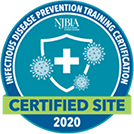As association professionals, we ask a lot of our members throughout the year: pay your dues on time, update your information in our database, attend this event, donate to our cause…on top of that, do you want to volunteer your valuable time helping us advance our mission?
Your members are your members for a reason: they clearly have a connection to your association’s mission, so they will likely want to help. However, the traditional volunteer opportunities may not cut it on their own. A recent Associations Now article highlights a problem with one of the most important volunteer positions within an association: ascending the ladder to ultimately serve as a board president (or a board member in general) can take more than a decade. Then, once you get to the top, the time commitment required of a board member may be too overwhelming for busy members.

It’s obviously important to adequately prepare your members for these important board positions. However, it’s equally important to also provide flexible volunteer options that may attract those members who are short on time but still want to help.
Enter “microvolunteering” – defined as “easy, quick, low-commitment actions that benefit a worthy cause.” Your association serves a worthy cause, and by providing microvolunteer opportunities, you can engage members who find specific project work more appealing than sitting on a broader committee, or who want to contribute without making a multi-year commitment.
It can be hard to begin incorporating microvolunteer opportunities after years of only using the traditional board and committee structure. One of the hardest parts may be thinking of areas in your association where microvolunteering would be both useful and possible. You will have specific ideas for your particular association, but some general ideas include:
- Writing or editing blog posts, newsletters, or webpages
- Providing feedback on an event theme or graphic
- Completing a survey or participating in a focus group
- Spreading the word about a survey to new networks
- Researching other associations in your field to compile trends or benchmarks
- Testing new association websites or online resources to identify potential issues
- Helping to set up or clean up an event

Once you brainstorm the microvolunteer opportunities that make sense for your association, you need to make these opportunities known to your members. Create a page on your association’s website that lists the volunteer opportunities with short descriptions and timelines, then publicize this through email, social media, or word of mouth – whatever method works best for your members.
Finally, remember to THANK the members who participate in your microvolunteer opportunities! Make sure they know that their valuable work contributed to your mission – giving them the recognition they deserve could inspire them to volunteer again in the future.
Most associations know that there will always be a place for boards and committees; the smart associations will also add microvolunteer opportunities to tap into the broadest possible volunteer base.




